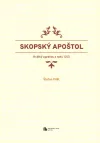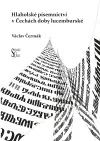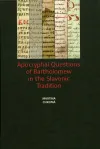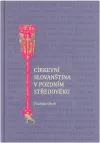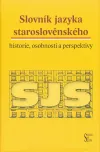Church Slavonic and the Romanian-speaking Lands I‑III.
Origins, Blossom, Decline
- Slovanský ústav AV ČR, v. v. i.
- Práce Slovanského ústavu AV ČR, Nová řada
- 978-80-86420-77-6 (celek)
- 978-80-53003-04-9 (svazek 1)
- 978-80-53003-00-1 (svazek 2)
- 978-80-53003-01-8 (svazek 3)
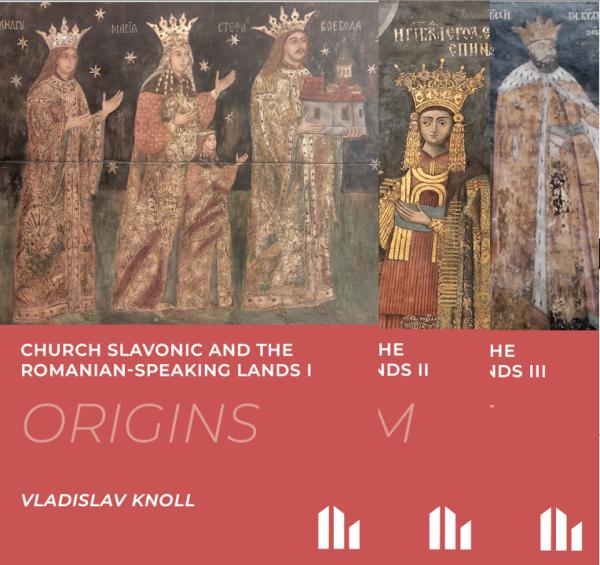
The Slavonic written culture developing in the Middle Ages and early modern period on the territory of present-day Romania and Moldova represents a virtually unknown chapter of European cultural and linguistic history, despite its long tradition and the vast number of sources.
The trilogy offers the first comprehensive description of the history of Slavic literature in the territory of present-day Romania and Moldova from its beginnings to the beginning of the 19th century. It is based on primary sources and the latest scholarly literature from different countries and research traditions, and applies a new methodology for the analysis of Church Slavonic texts. It also examines previously neglected documents and sheds new light on this understudied cultural heritage.
The publication of the trilogy was made possible thanks to the support of the NAKI II Programme (DG16P02H024) of the Ministry of Culture of the Czech Republic (GORAZD: An Old Church Slavonic Digital Hub) and the Mobility Programme of the Czech Academy of Sciences and the Romanian Academy.
Slovansky psaná kultura rozvíjející se ve středověku a raném novověku na území dnešního Rumunska a Moldavska představuje přes svou dlouhou tradici a obrovské množství pramenů prakticky neznámou kapitolu evropských kulturních a jazykových dějin.
Trilogie nabízí první souhrnný popis dějin slovanského písemnictví na území dnešního Rumunska a Moldavska od jeho počátků do začátku 19. století. Vychází z primárních pramenů a nejnovější odborné literatury z různých zemí a badatelských tradic a aplikuje novou metodologii analýzy církevněslovanských textů. Práce rovněž zkoumá dosud opomíjené dokumenty a vrhá nové světlo na toto nedostatečně prozkoumané kulturní dědictví.
Vydání trilogie bylo umožněno díky podpoře programu NAKI II (DG16P02H024) Ministerstva kultury České republiky (GORAZD: Digitální portál staroslověnštiny) a Mobilitního programu Akademie věd České republiky a Rumunské akademie.
Trilogii lze koupit prostřednictvím e‑shopu Knihkupectví Academia.
The trilogy can be purchased through the Academia E‑shop.
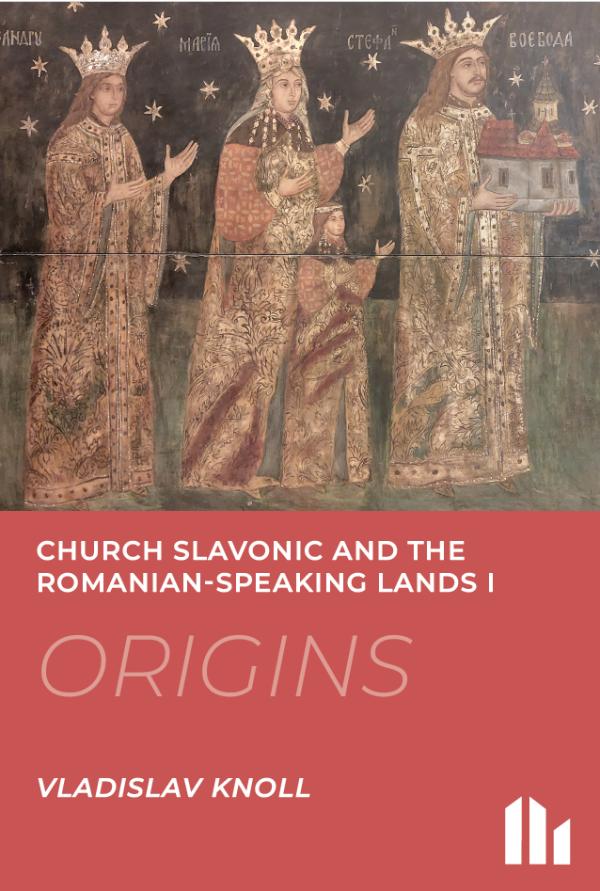
Church Slavonic and the Romanian-speaking Lands I: Origins. Prague: Institute of Slavonic Studies of the Czech Academy of Sciences 2024, 511 p. ISBN 978 – 80-86420 – 77‑6. ISBN 978 – 80-53003 – 04‑9. (Práce Slovanského ústavu AV ČR. Nová řada; sv. 54/I)
The book, which is the first volume of a trilogy devoted to this phenomenon, traces the development of Romanian Slavonic culture in the Middle Ages against the background of the historical and linguistic context of the time. The first part of the book examines the origins of Slavic-Romanian linguistic relations and the circumstances of the adoption of Church Slavonic as the cultural language of the Romance populations of southeastern Europe. The second part deals with the earliest Slavonic texts preserved in the area and the establishment of specific Slavonic administrative languages of the Romanian states founded in the 14th century (Wallachia, Moldavia). Attention is also paid to Slavic texts preserved in Transylvania.
Kniha, která je prvním svazkem trilogie věnované tomuto fenoménu, sleduje vývoj rumunsko-slovanské kultury ve středověku na pozadí dobového historického a jazykového kontextu. První část knihy se zamýšlí nad počátky slovansko-rumunských jazykových vztahů a okolnostmi přijetí církevní slovanštiny jako kulturního jazyka románského obyvatelstva jihovýchodní Evropy. Druhá část se věnuje nejstarším slovanským textům dochovaným v této oblasti a ustanovením specifických slovanských administrativních jazyků rumunských států, vzniklých ve 14. století (Valašska, Moldávie). Pozornost je věnována také slovanským textům dochovaným v Sedmihradsku.
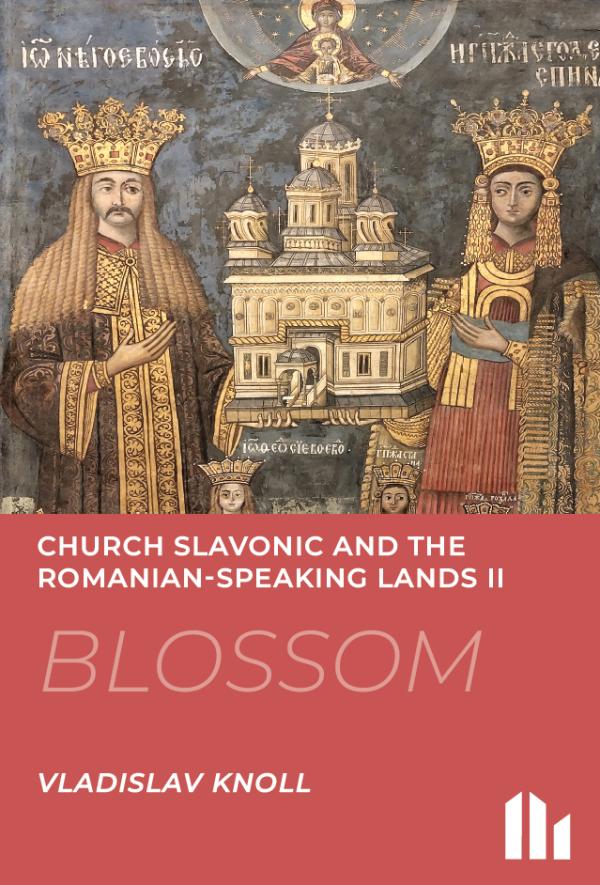
Church Slavonic and the Romanian-speaking Lands II: Blossom. Prague: Institute of Slavonic Studies of the Czech Academy of Sciences 2024, 431 p. ISBN 978 – 80-86420 – 77‑6. ISBN 978 – 80-53003 – 00‑1. (Práce Slovanského ústavu AV ČR. Nová řada; sv. 54/II)
The book, which is the second volume of a trilogy devoted to this phenomenon, describes the period of the greatest flowering of Slavonic written culture in the Romanian-speaking areas in the 16th and the first third of the 17th centuries. The most extensive original works of local Slavonic literature were produced during this period, including the Neagoe Basarab’s Teachings, which corresponds in time and theme to Machiavelli’s The Prince, and Moldavian chronicles and annals. The Romanian influence on the local written Slavonic languages deepened, and the first works written in Romanian appeared, whose spelling and to some extent vocabulary drew on the Church Slavonic and specific Romanian Slavonic tradition. Moreover, thanks to the extensive copying activity and the development of the printing press, the Romanian-speaking areas became one of the most important centres of Church Slavonic culture of the time.
Kniha, která je druhým svazkem trilogie věnované tomuto fenoménu, popisuje období největšího rozkvětu slovansky psané kultury v rumunsky mluvících oblastech v 16. a v první třetině 17. století. V této době vznikla nejrozsáhlejší originální díla místní slovanské literatury, mezi něž patří mj. Poučení valašského vojvody Neagoe Basaraba, časově a tematicky odpovídající Machiavelliho Vladaři, a moldavské letopisy a kroniky. Rumunský vliv v místních psaných slovanských jazycích se prohluboval a objevila se první díla psaná v rumunštině, jejichž zápis a do určité míry i slovní zásoba čerpala z církevněslovanské i specifické rumunsko-slovanské tradice. Díky rozsáhlé opisovačské činnosti a rozvoji knihtisku se navíc rumunsky mluvící oblasti staly jedněmi z nejvýznamnějších center církevněslovanské kultury té doby.
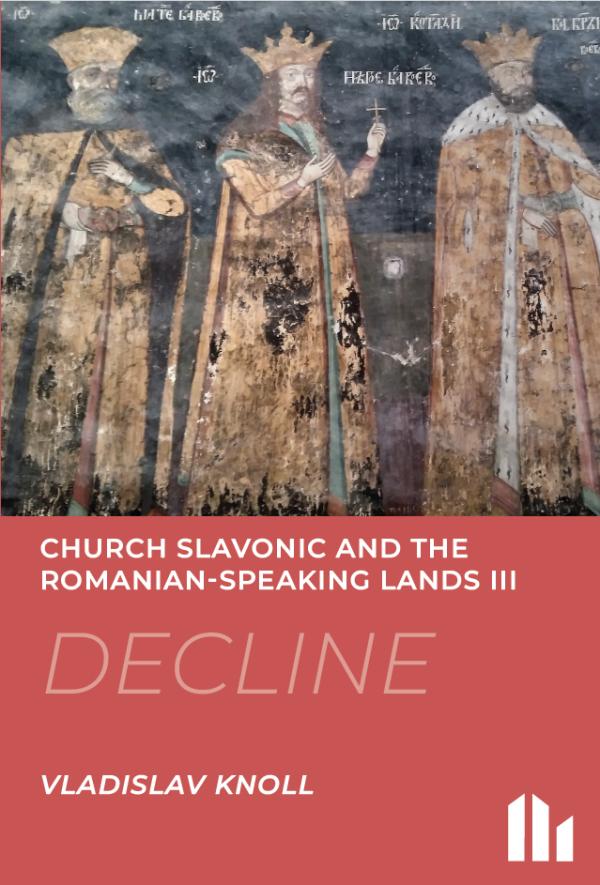
Church Slavonic and the Romanian-speaking Lands III: Decline. Prague: Institute of Slavonic Studies of the Czech Academy of Sciences 2024, 443 p. ISBN 978 – 80-86420 – 77‑6. ISBN 978 – 80-53003 – 01‑8. (Práce Slovanského ústavu AV ČR. Nová řada; sv. 54/III)
The book, which is the third volume of a trilogy devoted to this phenomenon, traces the gradual decline of the use of Church Slavonic in Romanian-speaking areas between the second third of the 17th century and the imposition of Romanian as the sole liturgical language in Romania in the mid-19th century. The first part of the book describes the gradual transfer of the roles of written Slavonic languages to Romanian and the late Slavonic texts written by Romanians until the definitive introduction of Romanian liturgy by the early 18th century. The second part of the book summarises the evidence for the knowledge and teaching of Church Slavonic during the reign of the Phanariot elites, who favoured Greek culture. Special attention is given to the flourishing of Church Slavonic culture in the communities of mainly Ukrainian monks in Wallachia and Moldavia in the 18th century, associated mainly with the activities of Paisij Velyčkovs’kyj.
Kniha, která je třetím svazkem trilogie věnované tomuto fenoménu, sleduje postupný ústup používání církevní slovanštiny v rumunsky mluvících oblastech v období od druhé třetiny 17. století do zavedení rumunštiny jako jediného liturgického jazyka v Rumunsku v polovině 19. století. První část knihy popisuje postupný přenos rolí psaných slovanských jazyků na rumunštinu a pozdní slovanské texty psané Rumuny do definitivního zavedení rumunské liturgie do začátku 18. století. Druhá část knihy shrnuje doklady o znalosti církevní slovanštiny v období vlády fanariotských elit preferujících řeckou kulturu. Zvláštní pozornost je přitom věnována rozkvětu církevněslovanské kultury v rámci komunit zejména ukrajinských mnichů ve Valašsku a Moldávii 18. století, spojenému především s činností Paisije Veličkovského.
